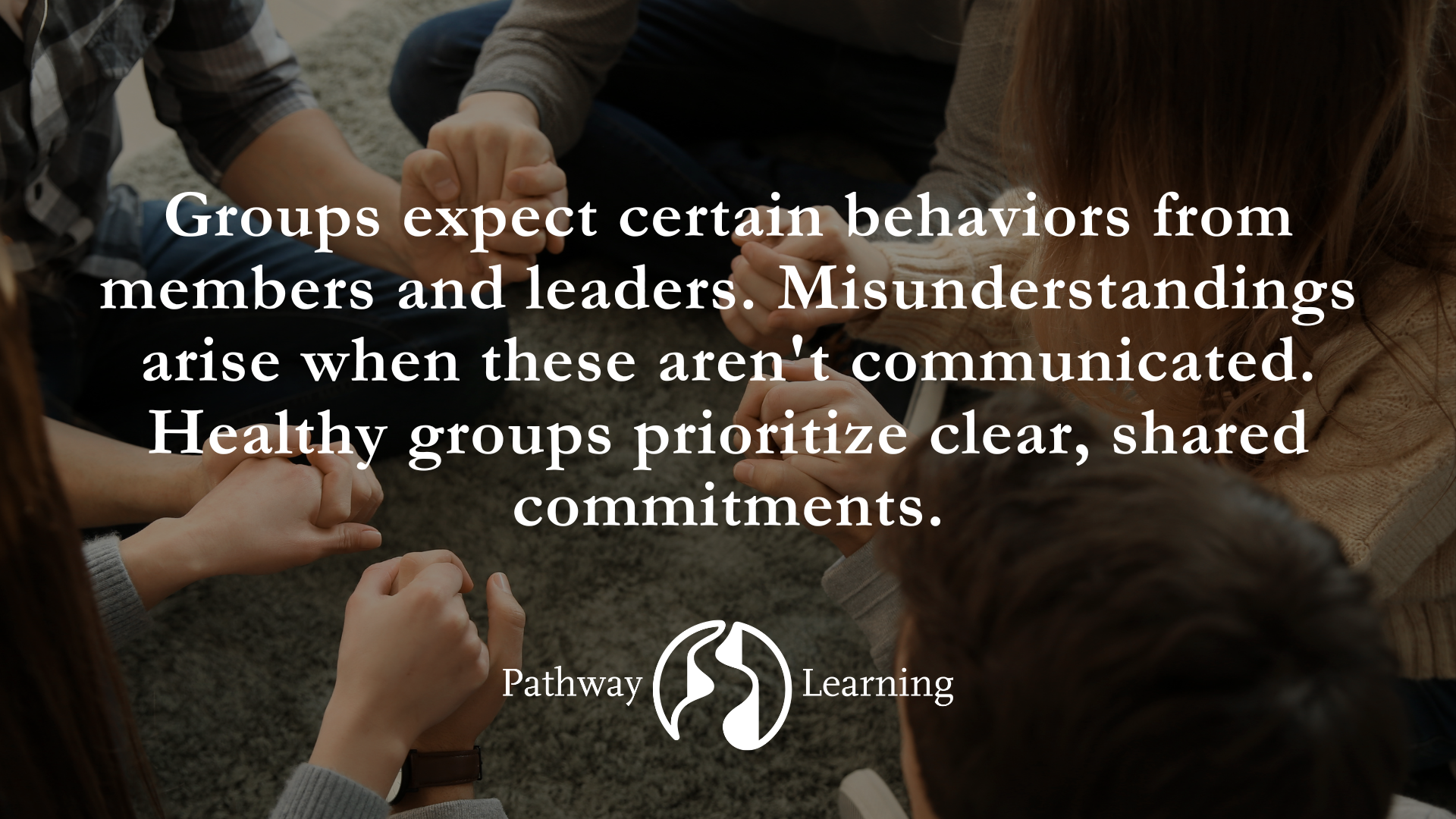Commitments in Community: Groups Series Part 5
By Dr. Steven L. Childers
Want to go deeper?
In this book you'll be equipped from Scripture with the principles and practices needed to help you develop biblical, God-honoring community groups. You’ll learn how to:
Follow Scripture's vision for a new community of redeemed humanity (Chapter 1)
Explain God's purpose to nurture his people through community (Chapter 2)
Demonstrate how the church builds itself up in love (Chapter 3)
Diagnose and lead healthy community groups (Chapter 4)
Determine what are the core commitments for community groups (Chapter 5)
Raise, nurture, and teach leaders in your community (Chapter 6)
Preview the Book
Transcript
Introduction
So far we’ve established a case for why church members should be regularly involved in private gatherings in smaller groups.
In this session, we’ll explore three kinds of commitments church group members make to develop healthy groups.
I. Group Attendance
The first commitment involves answering four basic questions regarding the nature of the group that will be in attendance: Who, How, When, and Where?
Who will be attending?
The first question is “Who will be attending the group?”
Some groups choose to organize around a certain type of people such as male/female, older/younger, married/single, couples with/without children, a geographical location, etc.
The type of group depends on the unique needs of the church and the direction of the church leaders.
How many will be attending?
The next question is “How many will be attending the group?”
Generally, the ideal is less than twelve people. A healthy small group size is between eight to twelve people. A little larger or smaller can work as well. But when groups have regular attendance of more than sixteen people, group intimacy is compromised. This can also be a signal that it’s time to start a new group.
Sometimes, even in groups of twelve, it’s helpful to organize sharing and prayer in two or three smaller groups so more people can participate, especially those who are timid.
When will we be attending?
The next question is, “When will group members be attending?”
Again, this depends on the unique needs of the church and direction of the church leaders. But healthy groups normally need to meet at least two times a month, and more if possible. It seems that the early church gatherings were at least weekly.
It can also be helpful for groups to decide the number of meetings they expect group members to attend. Healthy group members often make a commitment to meet at least two or more times a month for a minimum of 3-6 months. It’s usually best not to make a commitment for more than 1 year.
This doesn’t mean that groups should stop meeting together after they complete their group commitments. Instead, they should see their present commitment as ending with the option of making a new one for another time period.
This approach helps a group keep their commitment level high and allows group members to “drop with dignity” by finishing their group commitment before moving to another group.
Where will we be attending?
We come now to the question, “Where will we be attending?” This answer also depends on the unique context, needs, and leaders of the groups. In some cultural contexts it’s difficult and awkward to meet in members’ private homes. In other contexts it’s very natural and comfortable to do so. Creativity and perseverance is often needed to determine the best venue for group meetings.
II. Group Agenda
The second commitment involves answering the question, “What will we do when we meet together as a group?”
Since small groups are a subset of the larger church community, they should reflect the same five elements of a healthy church: Worship and Prayer, Learning and Discipleship, Fellowship and Shepherding, Evangelism and Mission, Mercy and Justice.
It’s not realistic to emphasize all five of these elements in all group meetings. But over time, healthy groups will emphasize all of them. So a good way to help determine a healthy group agenda is for leaders to periodically review these essential elements found in Acts 2:
1. Worship and Prayer
“They were praising God” (47) and “devoted to the prayers” (43) Group meetings should include time for worshiping God through praise and prayer.
Group members should be sharing their needs and receiving prayer from others. Prayers should also be offered for the advancement of God’s mission through the church.
Sometimes it’s effective for several people to pray. Other times, it’s best for only one or two. It may also be helpful to pray in smaller groups.
2. Learning and Discipleship
“They were devoted to the apostles’ teaching” (42) Group meetings should also include time for the study and application of God’s word.
In the Great Commission, Jesus commands us to make disciples by teaching people how to obey his commandments (Matt 28:18-20). Small groups provide an excellent place for learning how to apply God’s word to all of life.
Healthy groups often encourage members to listen carefully to the
preaching of God’s word in public worship and come to the group meeting ready to share their personal insights and applications with others.
Also, some groups will take the Sunday sermon message deeper by doing more in-depth bible study and application of the topic. Other groups will study through a book of the bible or use a resource approved by the church leaders.
3. Fellowship and Shepherding
“And ... they were breaking bread in their homes, they received their food with glad and generous hearts” (46) Group meetings should periodically include time for members to share their lives with each other during meals.
Regularly sharing meals in their homes seems to be a normal practice in the early church. There are few activities as effective as eating together to help develop relationships.
4. Evangelism and Mission
“The Lord added to their number day by day those who were being saved” (47) “After fasting and praying they laid their hands on them and sent them off” (Acts 13:3). Group meetings should also be outreach oriented, focusing on helping group members grow in their commitment to evangelism and missions.
This includes encouraging members to pray for the lost and consider inviting their lost friends and family to attend public worship and/or their group. Healthy groups also pray regularly for both their church’s wider ministry and for world missions.
5. Mercy and Justice
“They were selling their possessions and belongings and distributing the proceeds to all, as any had need” (45). Group meetings should include times to help group members know the needs of the poor in their community, both within and outside of the church, and how they can pray for them, give to them and serve them.
III. Group Agreement
The third and final commitment involves answering the question, “What is our group agreement?” The group agreement is a practical way group members solidify their commitment to the five essential elements of a healthy group described above.
Every group has expectations of its members and leaders. The problem is that these expectations are often not shared which can result in misunderstanding and conflict.
Some groups find it helpful to share these commitments with each other in writing by having a formal list. Others find it more helpful to share these commitments informally. Here are examples of things that could be included in a group agreement, sometimes called a group covenant.
Group Agreements
• Attendance: To give priority to the group meetings
• Participation: To share a responsibility in the group
• Prayer: To pray for one another and church ministries
• Availability: To be available to serve one another in need
• Confidentiality: To keep anything that is said confidential
• Accountability: To give permission to hold each other accountable
• Evangelism: To reach out to bring others to the church and group
• Mercy/Justice: To pray for and serve the poor with others in the group
• Assessment: To give honest, constructive feedback to help the group improve
• Multiplication: To be willing to consider starting and reproducing new groups
Group Meeting Structure
So, how long should a group meeting be? And how should we use the limited time we have together as a group?
There is no right or wrong way to structure a group meeting. Issues like time and structure depend on the unique needs of the group.
But a general example can be helpful. A healthy 90-minute group meeting might be structured like this:
• Welcome and Worship (15-20)
• Bible Study (20-25)
• Fellowship and Sharing (20-25)
• Prayer for members and outreach (20-25)
Real life group meetings are rarely this structured. Instead, healthy groups will sometimes spend entire meetings focusing on only one or two of these elements. But over time, healthy groups will emphasize all of them.
We help underserved church leaders develop churches that transform lives and communities



